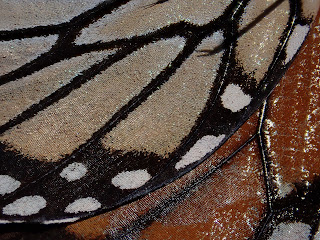Bang bang bang. Rattle. Bang bang bang.
On some mornings, my alarm clock wears a little down jacket, wields a piercing peak, and makes a lot of noise.
That’s the downside of having a bird feeder suction cupped to my bedroom window. The upside, of course, is that I often wake up to the cuteness that is a red-breasted nuthatch.
Like clockwork, a few minutes after sunrise (whether I can see it through the thick, gray clouds or not) small birds start landing with small thuds on my feeder. Soon, the runway becomes as busy as an airport with little wings coming and going. Chickadees gurgle at each other aggressively, and nuthatches add their yank-yank calls and adorable little squeaks to the mix.
Chickadees are my favorite, of course, but the red-breasted nuthatches are a close second. Their size is endearing, I think. Red-breasted nuthatches are almost an inch shorter than chickadees and weigh a gram less. That may not seem like much, but since chickadees measure just 5.25 inches long and weigh only 11 grams, the result feels tiny.
I admire the red-breasted nuthatch’s color scheme, too. The slate gray of their back always looks fashionable, while the rusty orange on their belly feels warm and lovely. Add in the sharp black-and-white stripes on their head, and I give a smitten sigh.
My parents, too, appreciate these little guys. Their well-stocked feeders in northeast Iowa have plenty of cardinals, tufted titmice, and bluebirds all winter, but they almost never see red-breasted nuthatches. They do have plenty of white-breasted nuthatches, another bird who lands with a larger thud on my feeder.
White-breasted nuthatches weigh more than twice their little cousins. More handsome than cute, their black head grading into a gray back and mostly white belly is quite natty.
 |
| White-breasted (left) and Red-breasted nuthatch (right). Photos by Larry Stone. |
Beyond size and color, these two cousins have some interesting similarities and differences. They both eat mostly insects in the summer, and feed insects to their chicks as well. Both find those bugs by clinging to tree bark with their super strong feet and long claws, and moving headfirst down the trunk. Their short tail stays out of the way.
This behavior is thought to give nuthatches a different perspective than the woodpeckers and brown creepers who they often feed near. Those birds, who don’t have feet adapted to climbing down, are stuck moving up a tree by using their stiff tails to brace against the trunk. They see food hidden on the underside of bark flakes, while nuthatches see lunch from the top down and extricate it with long, pointy, upturned bills.
Both shades of nuthatch switch to seeds in the winter when insects (thankfully!) decline. Red-breasted nuthatches eat conifer seeds and prefer conifer forests, while white-breasted nuthatches are more often found in deciduous woods and focus on eating the seeds and nuts found there.
Red-breasted nuthatches have another reason to live in the pines. When a pair is readying their nest cavity, they coat the entrance hole with conifer resin—sometimes even using a piece of bark as a tool to help keep their beak clean. Scientists think that this deters predators and competitors, while the homeowners just dive right through without touching the resin.
In a similar bid to deter predators, white-breasted nuthatches smear their nest entrance with bits of fur, plants, crushed insects, and mud. These materials may work by masking their scent.
So, with habitat preferences ingrained, the range of each nuthatch species overlaps and separates in concert with coniferous and deciduous forests. Red-breasted nuthatches nest across Canada, the northern U.S., and down through the Rocky and Appalachian Mountains. White-breasted nuthatches are common yard birds in both summer and winter throughout most of the United States.
 |
| Red-breasted nuthatch range. https://www.audubon.org/bird-guide |
 |
| White-breasted nuthatch range. https://www.audubon.org/bird-guide. |
Since these birds are widespread and common, even increasing in recent decades, it’s difficult to detect one of their other habits—about every two years the northernmost individuals head south for the winter and hang out with the nuthatches already in residence there. Their movement is probably necessitated by low seed years in their breeding habitat. This is reported to be one such “irruptive” year. I feel like maybe I’ve noticed more nuthatches at my feeder this winter, but maybe I’m just filling it more consistently?
Whatever the reason, I’m enjoying the abundance of cute alarm clocks at my window
Emily’s award-winning second book, Natural Connections: Dreaming of an Elfin Skimmer, is now available to purchase at www.cablemuseum.org/books and at your local independent bookstore, too.
For more than 50 years, the Cable Natural History Museum has served to connect you to the Northwoods. The Museum is now open with our exciting Growing Up WILD exhibit. Follow us on Facebook, Instagram, YouTube, and cablemuseum.org to see what we are up to.

.jpg)
.jpg)










